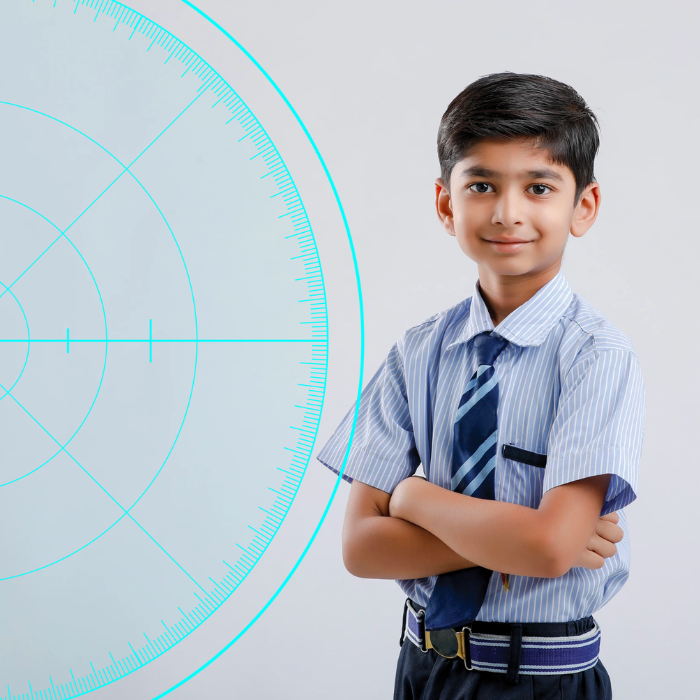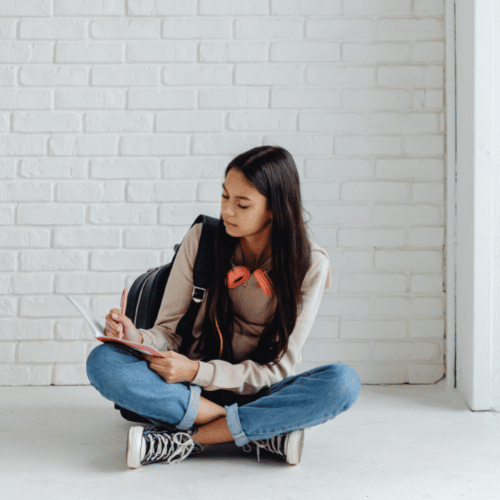
The topic of menstruation is still taboo for many people, but it’s important that our tamariki and rangatahi have the right information at the right time, explains Tiffany Brown.
Many people assume girls get their first period at secondary school, but for nearly half of young Kiwi females, this is no longer the case. Research from 2019 found the average age for girls to start menstruating in New Zealand was 13.2 years old, with close to 50% of young girls experiencing menarche – a girl’s first period – during their intermediate, or even primary years.
This trend is consistent throughout Western countries. The average age of menarche in USA is 11; a century ago, it was 14.
Because menarche is triggered by a girl’s oestrogen levels, there are several likely explanations for this phenomenon of periods starting at an increasingly younger age.
Girls tend to be larger these days than they used to be, weighing more and with increased body fat percentage. This could lead to earlier activation of the pituitary gland which produces oestrogen and progesterone, the hormones involved in puberty.
Increased exposure to environmental toxins and consequent disruption of hormone production may also play a part. Endocrine-disrupting chemicals, or EDCs – now ubiquitous in our environment – have been shown to mimic oestrogen and other naturally-occurring hormones in the body. The theory goes that these chemicals promote weight gain by influencing how cells and the body regulate metabolism, affecting oestrogen production. Stress may also be a factor, as it, too, can affect oestrogen levels.
Only a few generations ago, puberty and reproduction were among taboo subjects that tended to have a good deal of embarrassment attached to them, but these topics are now steadily becoming normalised, which is great news for parents, caregivers, and growing girls.
Early preparation
In terms of getting prepared for your child’s first period, you can never be too prepared! Nor can you prepare too early.
Be honest with yourself: if you have sensitivity or reluctance around this topic, it would be wise to school up on some factual information and perhaps look for support from those who’ve been there before you. Questions may come out of left field, so it’s a good idea to be ready. Reading or talking about the issue with other adults may also help you feel more comfortable when approaching the topic.
Stay alert for budding breast development, usually the earliest sign that puberty is getting underway. A major growth spurt, or underarm and pubic hair can also signal that periods will start soon.
Early periods can be light and irregular; menarche is separate to ovulation, which usually begins around two years after periods begin.
Experts recommend talking to children as early as you can so they can in turn be as prepared as they can be when periods start.
Bringing it up: An age-appropriate guide
Many of us feel awkward or intimidated to discuss periods and puberty with our children, but the more open and matter-of-fact we can be, the more comfortable they’ll feel to bring questions or concerns to us later, and the more we can help them to lessen any feelings of shame or embarrassment about their bodies and the changes puberty brings.
Sticking with scientific terminology and describing menstruation and sex in a scientific way can help to remove any stigma or mystery around the subject.
Preschoolers may be curious about the period products they notice their mother or older sisters using. Respond to their questions with simple, matter-of-fact statements, and try not to display any emotional reaction. You might say, “Yes, this happens to me/your sister once a month. It’s a completely natural part of being female.” More detailed information can be passed on when they’re a bit older.
Primary school kids have possibly already heard something from friends or peers about the topic, which may prompt questions.
In any case, around eight or nine is thought to be a good age to consider having a plain-speaking conversation; not only will this prepare them, it could also help them to be supportive of any friends who experience puberty at an earlier age, and certainly reduce any mystery among girls who progress at different times.
Try to choose a time and setting in which you know your child will be relaxed and comfortable.
Intermediate or secondary school children will likely have become more private, and if they haven’t yet had a period talk, they may look to social media or friends to fill in the gaps.
Although you may experience resistance at first, start by opening a weekly dialogue with your child about their personal issues, with a view to introducing the topic once they seem more comfortable to talk. Ensuring you are asking lots of questions about what and who is important to them will help establish trust if they have started to pull away from you as their primary source of information.
What to say
Menstruation can be normalised for children by explaining what happens in a simple, easy-to-understand way, reassuring them that periods are a normal and healthy part of everyday life.
An example for younger children:
“Puberty starts for everyone somewhere between 10 and 15. This is a completely natural process. For girls, it means that each month blood is released from their uterus. We use period products like pads, tampons, menstrual cups, and period underwear to collect it.”
An example for older children:
“Puberty starts for everyone somewhere between 10 and 15. For girls, this means their bodies start to practice for growing a baby one day. The uterus is where a fertilised egg will be implanted. Each month, hormones tell the uterus to prepare for a fertilised egg by making a lining out of blood and other tissues. When the egg isn’t fertilised, hormone levels drop, and the lining is shed out through the vagina. We use period products like pads, tampons, menstrual cups, and period underwear to help manage the 3-7 days of period flow. Even though it looks red or brown, periods are mostly made of water. There’s nothing wrong with your body when this happens. Periods are a normal part of life for about half the people in the world.”
Encourage your child to ask questions, and try to keep your responses factual and straightforward. Approach the topic lightly – but not flippantly – so they can feel comfortable to engage with you. The more we are mysterious, secretive, or non-communicative about a topic as adults, the more children may associate that topic with shame or embarrassment.
Whether the conversation leads to more in-depth discussion of reproduction will depend on you and your child. It would pay to be prepared and equally calm and factual if you do end up discussing the birds and the bees; resources can also help.
FAQs
These are among the most commonly asked questions during first-time period discussions with children:
- How long do periods last?
- How often do they happen?
- Will it hurt?
- What if I get it while I’m not at home?
- Can I swim during a period?
- How much blood will come out?
- What should I use to manage the period, and how do they work?
A little extra help
There are plenty of resources available that could help you have these important conversations. You’ll find books in the library to suit your child’s age and understanding. There are also videos and resources online. Be sure to do your research first and familiarise yourself with these materials before you talk to your child.
Boys, too?
Many parents and caregivers advocate explaining menstruation to boys as well as girls. Boys can gain a better understanding of the difference between bodies of either sex, how babies are made, and the experience of female relatives or friends, as well as any future partners or children. Sharing factual information in a calm way will also help them to be more respectful about periods.
Experts tell us the quickest way to reduce any shame or stigma around a topic is to keep talking about it.
Period products: What to use
| Product | Pros | Cons |
| Period underwear | No additional items needed.Easy to start with.Useful for forgetful or busy children. | Need washing and drying between uses.Not always suitable for heavy flow. |
| Pads | There are types available to suit a range of needs.Disposable, portable.Easy to start with. | Need to ensure they have enough and the right type.Need replacing 3-6 times a day, depending on flow.Disposal can be tricky or inconvenient. |
| Tampons | There are types available to suit a range of needs.Disposable, portable, discreet. | Need to ensure they have enough and the right type.Need replacing every 4-8 hours, depending on flow.Disposal can be tricky or inconvenient.Trickier to get the hang of insertion. |
| Menstrual cup | No additional items to deal with.Once inserted correctly, can be worn for up to 12 hours.Useful for forgetful or busy children. | Need to be emptied and washed between uses.Trickier to get the hang of insertion. |
Free period products in schools
A Ministry of Education (MOE) initiative began in 2021 to supply free period products in all state and state-integrated schools and kura on the basis that some students were missing school because families couldn’t afford period products. If your school is not already enrolled in this programme, ask your school representative to email AccessToPeriodProducts@education.govt.nz.
An ongoing dialogue
Once you’ve navigated through and supported your child with the initial stages of menstruation, encourage an ongoing relationship of support. Respect their privacy and allow them space to self-manage their periods; you may introduce them to a period tracker app or journal so they can better understand and prepare for their own cycles.
Consider your child’s comfort level in terms of how much they share with you, and try not to be pushy. Again, creating and nurturing a calm, open way of communication will bode well, as well as help in many other situations as they experience life as a teenager and young adult. This kind of steady, non-intrusive support will also help children be more confident and comfortable in their own skin.








